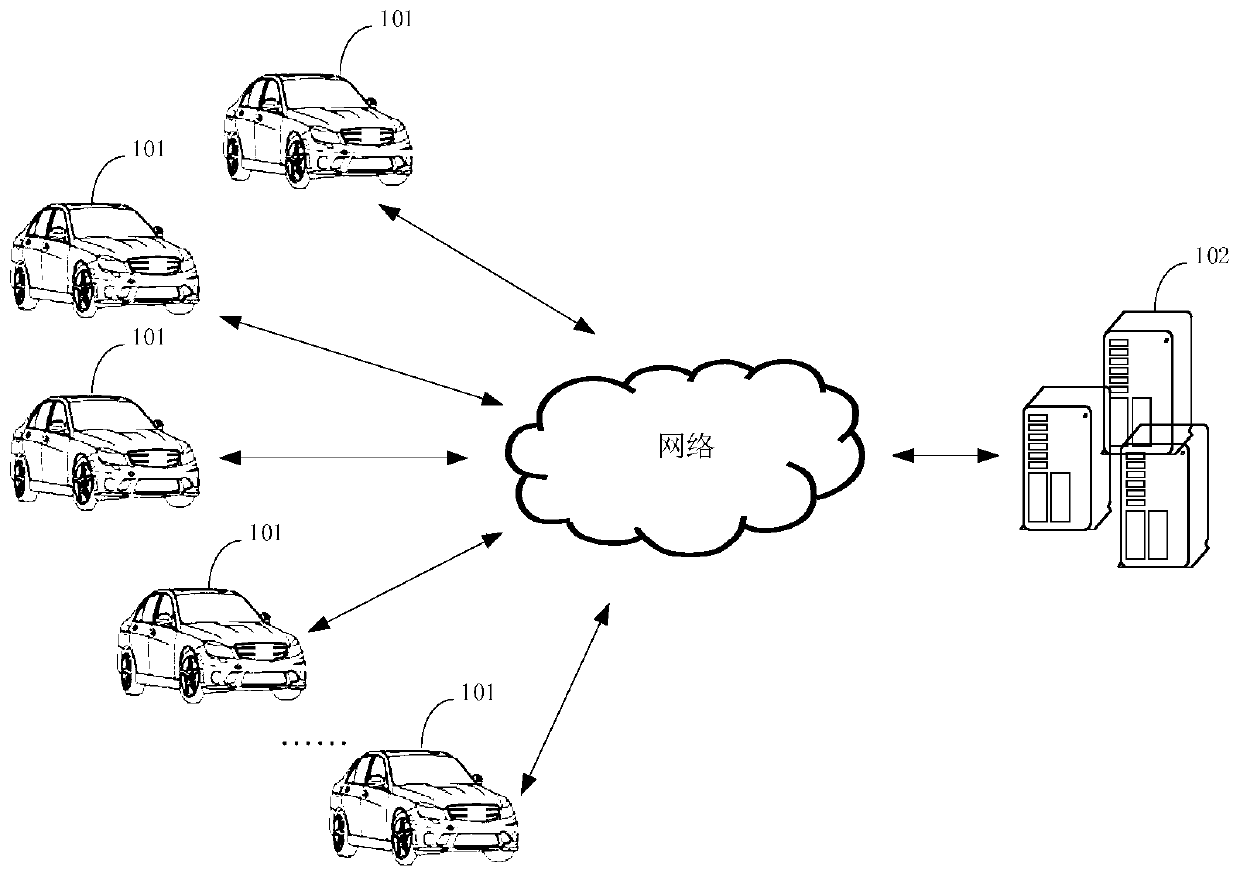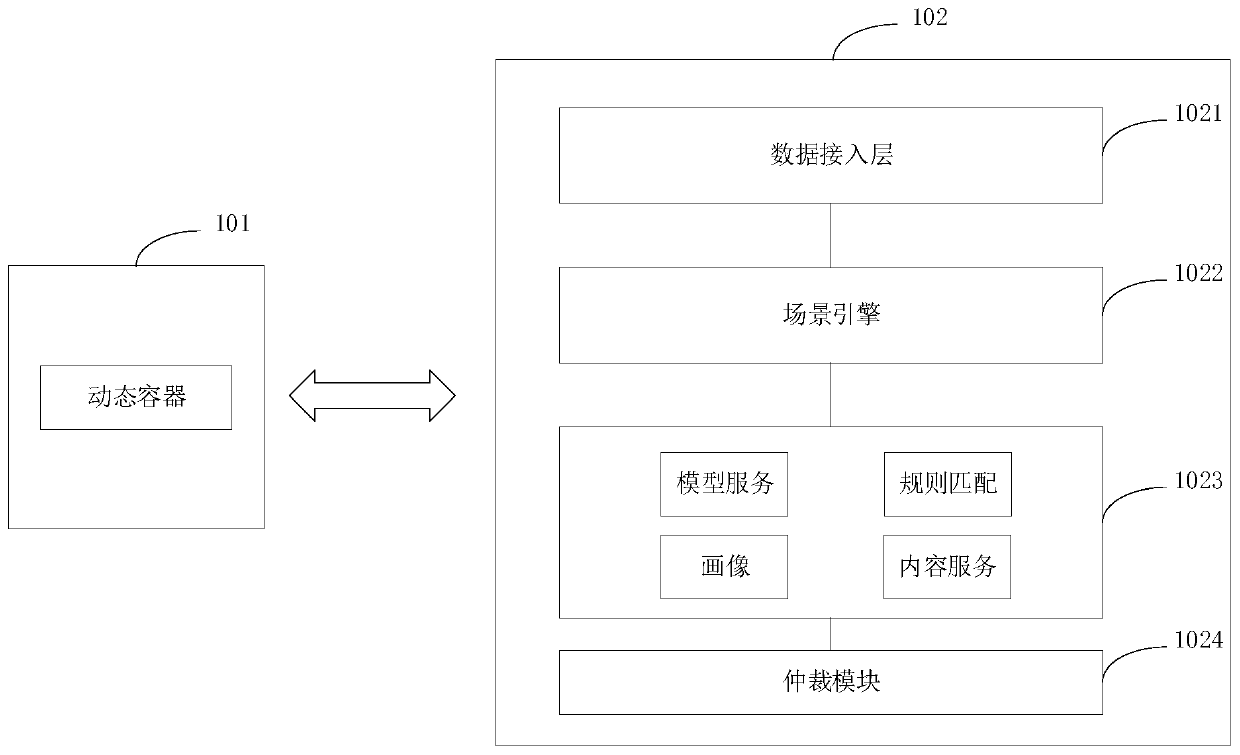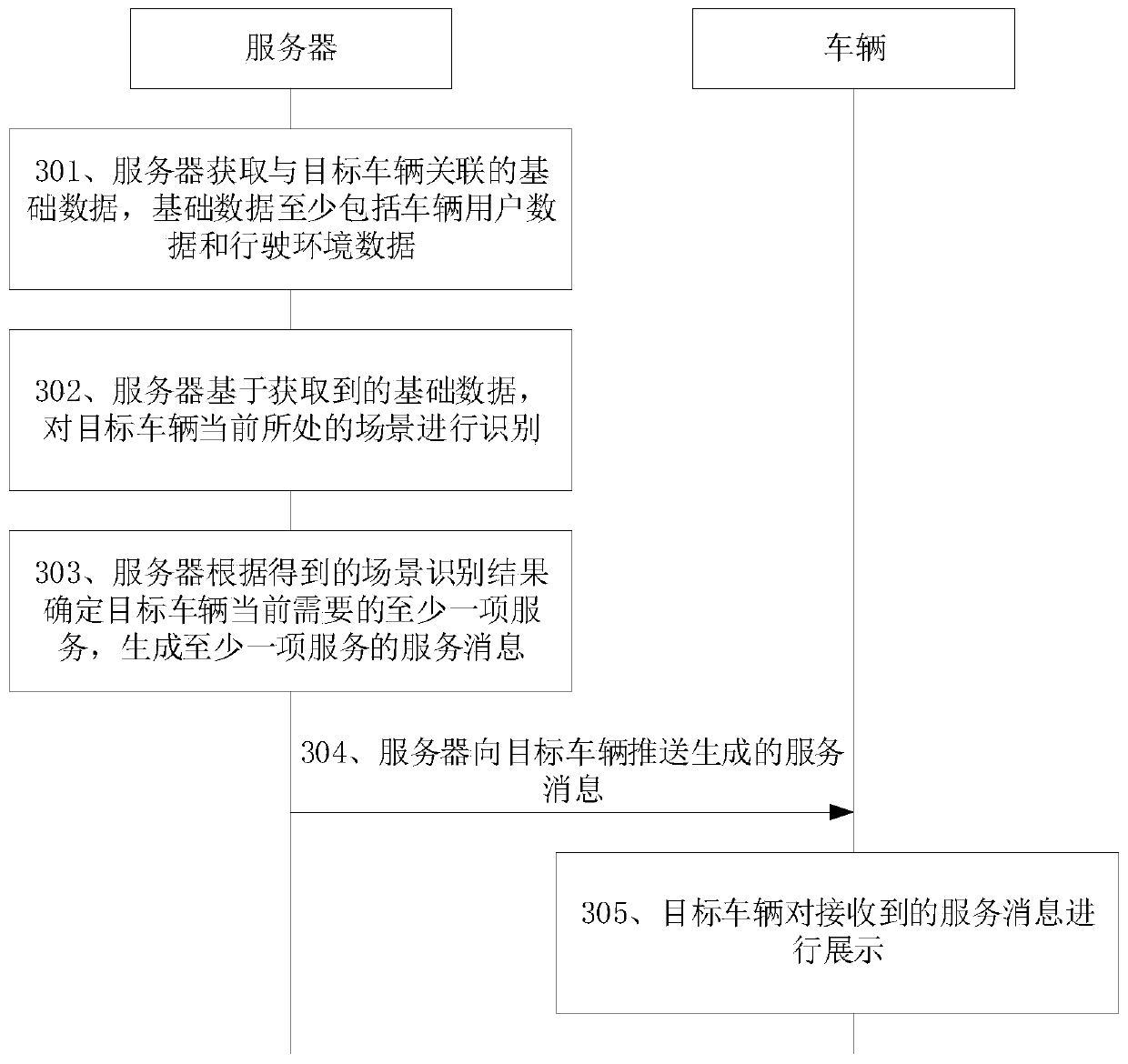Message pushing method and device, storage medium and server
A technology of message push and server, applied in the field of Internet of Vehicles, can solve problems such as affecting the safe driving of users, and achieve the effect of improving driving safety, better effect, and meeting service requirements.
- Summary
- Abstract
- Description
- Claims
- Application Information
AI Technical Summary
Problems solved by technology
Method used
Image
Examples
example 1
[0166] Example 1, for navigation scenarios, the basic data distributed by the data access layer to the corresponding scenario engine may include any one or a combination of at least two of the following: vehicle status data, track data, dynamic road condition data, POI data, infrastructure data and weather Environmental data; and the corresponding scene engine will call the functional modules in the public service layer, such as the rule configuration module, model service module and portrait, based on the basic data distributed above, perform scene recognition, and generate navigation messages that match the navigation scene. , the navigation message can look like Figure 7 shown.
example 2
[0167] Example 2, for the content service scenario, the data distributed by the data access layer to the corresponding scenario engine may include any one or a combination of the following: user behavior data and vehicle status data; and the corresponding scenario engine will call the public service layer Functional modules, such as content service modules and portraits, perform scene recognition based on the basic data distributed above, and generate content service messages that match the content service scene, such as pushing listening services to vehicle users.
[0168] In this embodiment of the application, pushing the generated service message to the target vehicle is completed by the arbitration module.
[0169] In a possible implementation manner, the arbitration module may include a flow control module, a decoration module, a push module, and the like. Among them, after the arbitration module receives the service messages generated by the scene engine, the flow contro...
PUM
 Login to View More
Login to View More Abstract
Description
Claims
Application Information
 Login to View More
Login to View More - R&D
- Intellectual Property
- Life Sciences
- Materials
- Tech Scout
- Unparalleled Data Quality
- Higher Quality Content
- 60% Fewer Hallucinations
Browse by: Latest US Patents, China's latest patents, Technical Efficacy Thesaurus, Application Domain, Technology Topic, Popular Technical Reports.
© 2025 PatSnap. All rights reserved.Legal|Privacy policy|Modern Slavery Act Transparency Statement|Sitemap|About US| Contact US: help@patsnap.com



